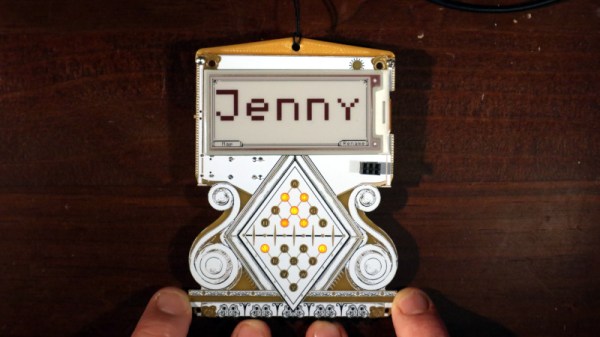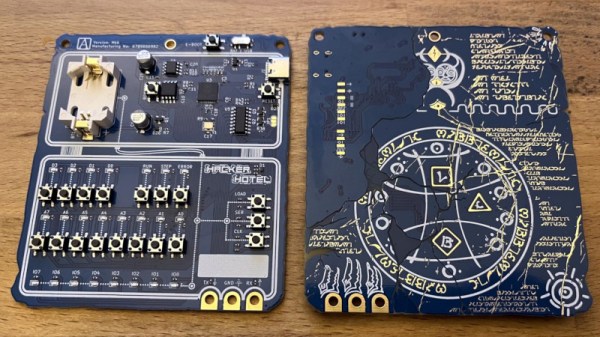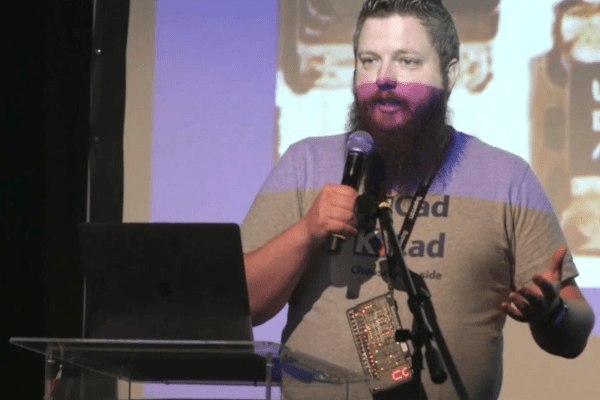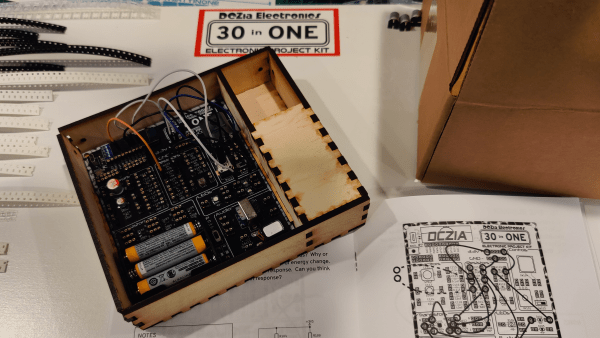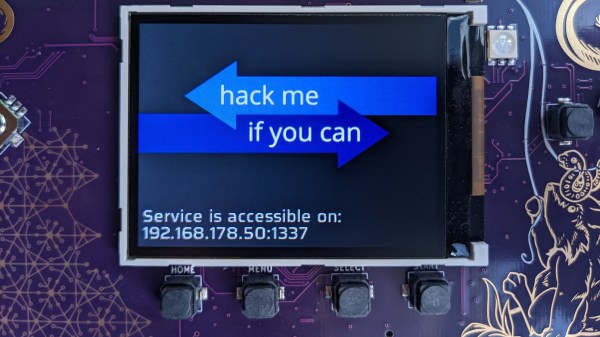Hacker Hotel is a small Dutch hacker event that takes place, as its name suggests, in a hotel. It’s a welcome high point in the damp of a north-west-European winter, and attendees come to its setting in the wooded Veluwe region in the centre of the country from far and wide. As is the custom with such events it has an electronic badge, and this year’s one had a rather unusual interface. Instead of a keyboard for text input, it replicates a 19th century Crook and Wheatstone telegraph, replacing the five needles of the original with a diamond-shaped grid of LEDs.
At its heart is an Espressif ESP32-C6 microcontroller which provides both a processor powerhouse and the usual array of wireless connectivity. Paired with that is a much more modest CH32V003 microcontroller to handle I/O tasks, and an e-paper screen using displays salvaged from surplus German supermarket shelf labels. That interface is handled by an array of five-way switches, and in a stroke of genius there’s a small relay on board which does nothing but provide a satisfying tactile “click”. Expansion is seen to by an SAO connector, Qwiic, and a USB-C socket. The software meanwhile is a combination of a non-volatile nametag, a complex set of puzzles used in the on-site competition, and a messaging system using the C6’s 802.15.4 mesh networking. A particularly neat feature of this was a Battleships game that could be played with another badge.
While this isn’t the first Hacker Hotel badge with an e-paper display, we like this one for its novel interface, for the mesh connectivity, and for that clicky relay. We’ll definitely be using ours as a name badge for some time to come.

